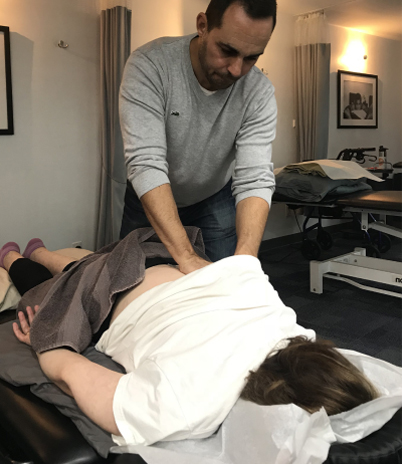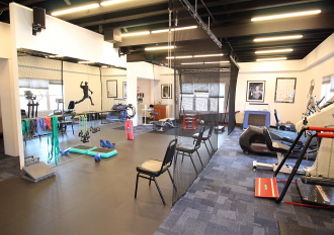For professional athletes, a sports specific physical therapy program may be more appropriate than just generalized rehabilitation which treats a wide variety of symptoms, conditions, injuries, and disorders. During general physical therapy, patients are evaluated for fundamental movements performed during regular everyday tasks such as walking, running, lifting, and pulling. Sports-specific therapy however, concentrates on identifying the demands of the patient’s related activity and the sequence of movements required for their optimal performance as an athlete. This includes certain combinations of basic functional movements that make them an exclusively trained skill such as:
• switching between walking and running down a field,
• jumping over a bar in pole vaulting,
• kicking a ball in soccer,
• pitching a ball in baseball,
• catching a ball in basketball,
• swinging a club in golf,
• and spinning on a sheet of ice in figure skating.
Knowing this, physical therapists create an individualized treatment plan that is framed around the systematic and progressive steps it will take the individual athlete to get back to pre-injury level. No two treatment plans are alike, as they are fitted to the patient’s dysfunctional needs. This means a golfer’s rehabilitation would most likely focus on the biomechanics revolving around their swing including abdominal core strength, balance, and postural alignment, whereas a soccer player’s individualized treatment plan may need more focus on leg muscle strengthening, agility, and running speed.
Brooklyn Body Works Physical Therapy is staffed with a professional and caring team of experts with clinical experience in Sports Specific Therapy. Browse through our physical therapist profiles to learn how they can help you with restoring functionality.
The exercises selected by the physical therapist are intended to duplicate the exact movements and actions within a sport making them highly specific to the patient’s recovery. The benefits witnessed from sport-specific rehabilitation include:
• Increase in speed.
• Improvement in strength and conditioning of weakened muscles.
• Increase in agility.
• Further prevention of injury.
• Increase in range of motion.
• Increase in acceleration and power.
• Improvement in balance and body spatial awareness.
• Improvement in endurance.
Further benefits may include stimulation of joint receptors, increased flexibility of stiff muscles and connective tissues, reduction in swelling and inflammation, improved lymphatic drainage and circulation, reduction in pain, relief of fascial restrictions and muscle spasms, prevention of muscle atrophy, and faster healing time of injuries.
Sports Specific Therapy can include techniques or exercises such as:
Brooklyn Body Works Physical Therapy began as an idea to bring the highest quality physical therapy to all people in our community. We wanted to offer the best that NYC has in health care while not marginalizing people based on socioeconomic boundaries (race, income, language, religion, etc). We offer a “concierge style service” and continue to accept many commercial insurances, medicare and even medicaid policies.



Since this is a physical therapy session which will require a physical examination and therapeutic exercise (varies by patient), we ask all our patients to come prepared. Please come dressed in loose fitted clothing that will allow for easy mobility, comfort, and access to the area of complaint. In addition we recommend sneakers with soles that grip to prevent slips or falls.
The need for a referral depends on what type of insurance you have. Most insurance plans do not require one, however some insurances do. For example, if you have HIP, you will need a referral from your primary care physician. We ask that you check to see what your health insurance plan requires prior to your initial visit. If you are unsure, please contact our front office and we’ll do our best to determine whether or not you require a referral.
To get in contact with us, click on the following link to view information pertaining to each office.
Each patients case and diagnosis is unique and requires the development of an individualized plan of care. Your physical therapist will give you an estimate of the number of sessions needed to reach a level of “feeling better”, during your initial evaluation.
Over time the number of visits may increase or decrease from the initial estimate, based on the progress made.
Brooklyn Body Works Physical Therapy accepts many of the available major insurance plans as well as alternate payment options, including cash/self-pay, to make our services accessible and affordable. Please visit the link below to view all information pertaining to Payment Options.